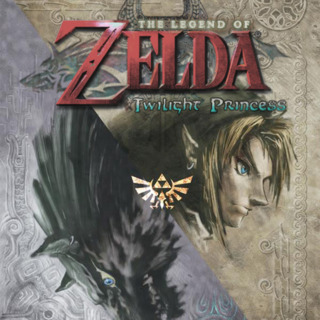It's a Zelda game; greatness is inevitable.
The game begins with the reappearing Hero of Time himself conversating with what appears to be his father, or guardian. Apparently, you must rest up in order to deliver an important gift to Hyrule Castle the following day. From the very beginning, you are given the chance to learn the game's controls, from adjusting to the Wiimote's abilities to becoming familiar again with plenty of previous Zelda titles' nostalgic items and themes.
Where Twilight Princess throws gamers for a loop is the ability to play as a wolf - Link's "beast" form. As a beast, gamers are able to heighten their senses to see spirit beings and hidden objects, dig into the ground for rupees or other key items, and fit into certain areas Human Link may not be able to. At first, changing between wolf and human forms is left out of the player's hands and into the story's. However, deeper into the game, the player will eventually be able to switch between forms at their choosing, and is often necessary to complete dungeons and puzzles.
Often times, playing as Wolf Link is more enjoyable than playing as Human Link. Unforuntaly, this is usually the cause of outdated gameplay mechanics gamers may have seen too much of in the Zelda series. Nostolgia is one thing; old and rusty is another. Though the game takes (somewhat) advantage of the Wiimote's abilities, most of the gameplay functions are reminiscent of every single Zelda game to have emerged in the past, and aren't updated or tweaked in any way. Might as well pop in Ocarina of Time and replay that again.
What may be considered a pro for some, though a con for others, is the game's lack of intermission time between dungeons. Usually the game seems to jump from dungeon to dungeon too quickly, without any use for environment exploration or character development for the very small supporting cast Twilight Princes has. The first few dungeons themselves aren't very interesting until half-way through the game, where they pick up in difficulty, as well as fun factor. And of course, any key items evident in previous Zelda games make an apperance here as well, such as the Bow & Arrow, Hookshot, and Boomerang.
Graphically, Twilight Princess doesn't do much to impress. It mostly looks like a fantastic GameCube game. But, since this is the Wii, satisfaction is not met. Though the characters have much personality in their facial expressions and actions, environments often look bland, and lack sharpness and color. Where the graphics DO impress, is the boss fights. The enemies are large and detailed, and give a great sence of epic warfare. Boss battles are usually placed in perfect-fitting environments which suit it perfectly.
Sound-wise, most of the traditional Zelda chimes and melodies make a return. It tends to bring a sense of nostalgia, but almost completely drops the ball on quality. None of the music is live-orchestrated (come on Nintendo, this is a next-gen console here), and the sound effects produced by the Wiimote are choppy and plain ugly.
Replay value tends to mirror the same amount as most games in the Legend of Zelda series. Some side-quests are available, each one quite lengthy in its own right, as well as challenging. The length of the main story itself is decent.
For what is said to be the finale of the Legend of Zelda series, Twilight Princess could have been more than it is, especially considering its pushbacks, giving Nintendo more time to develop it. But, nonetheless, it's a Zelda game, so greatness is inevitable. Its minor faults don't quite stand up to its strengths and pure fun factor exhibited in all Zelda games, making Twilight Princess a must-have for the Wii owner and Zelda fan.

